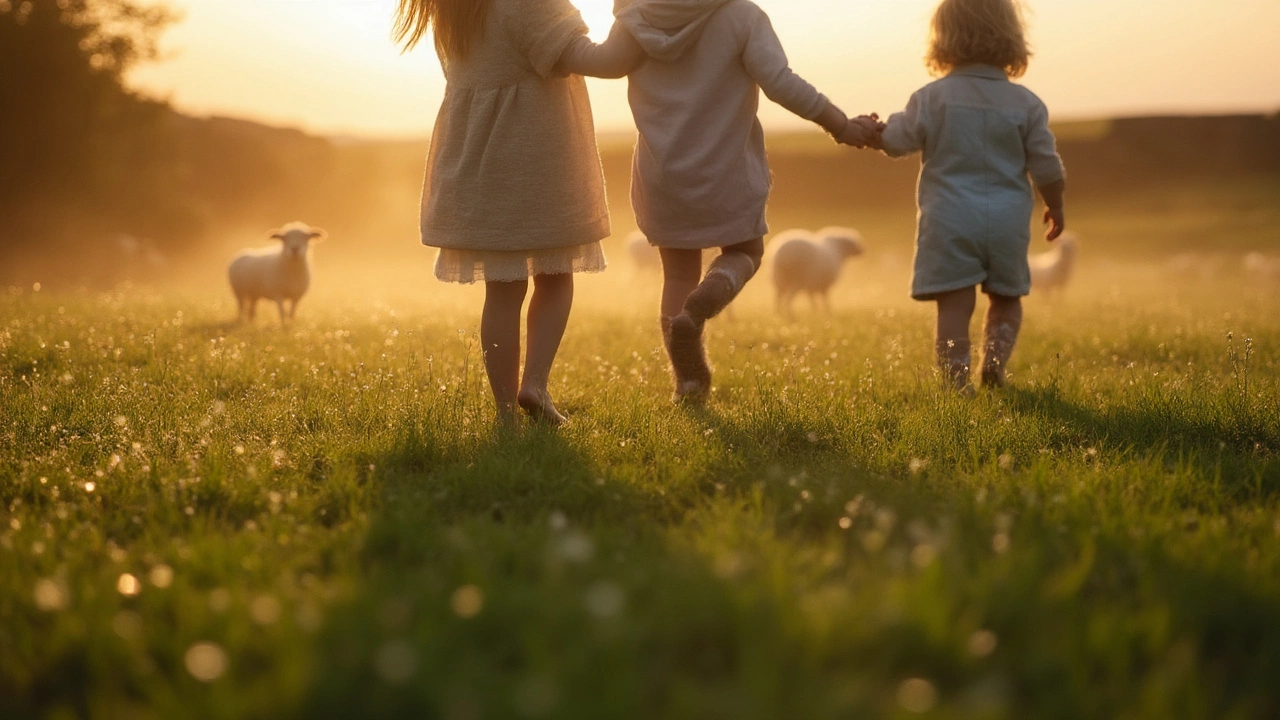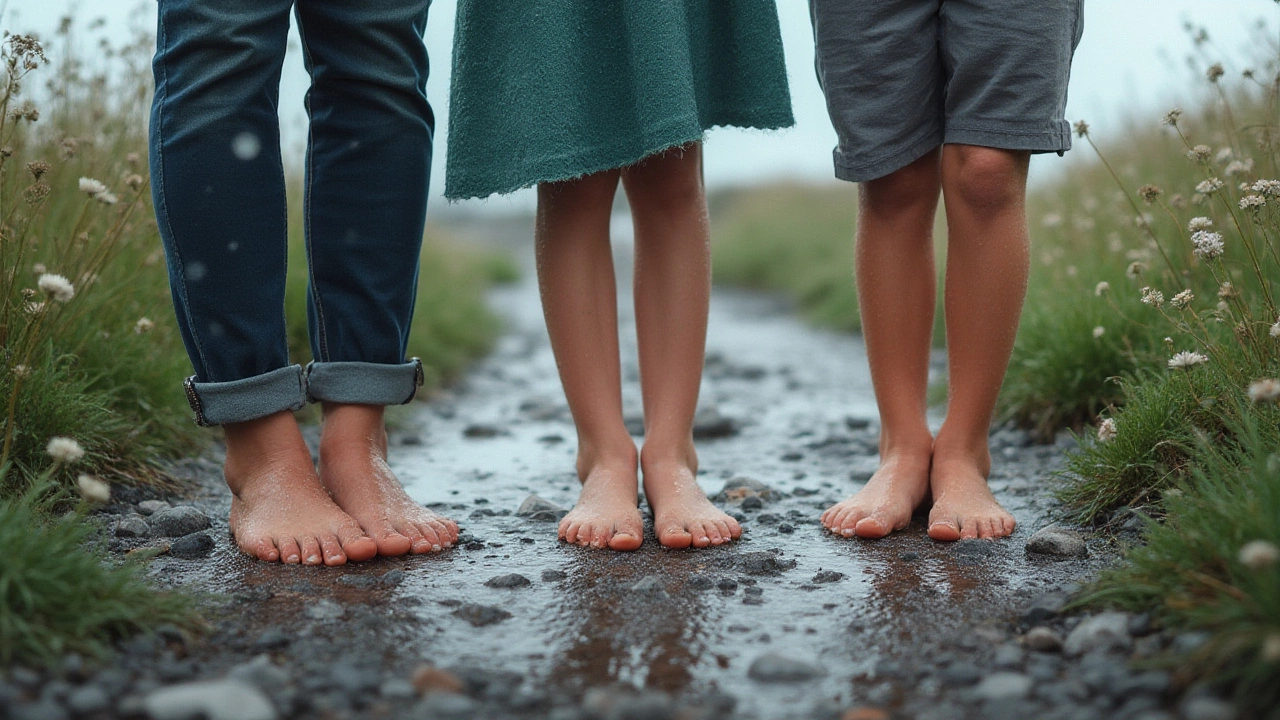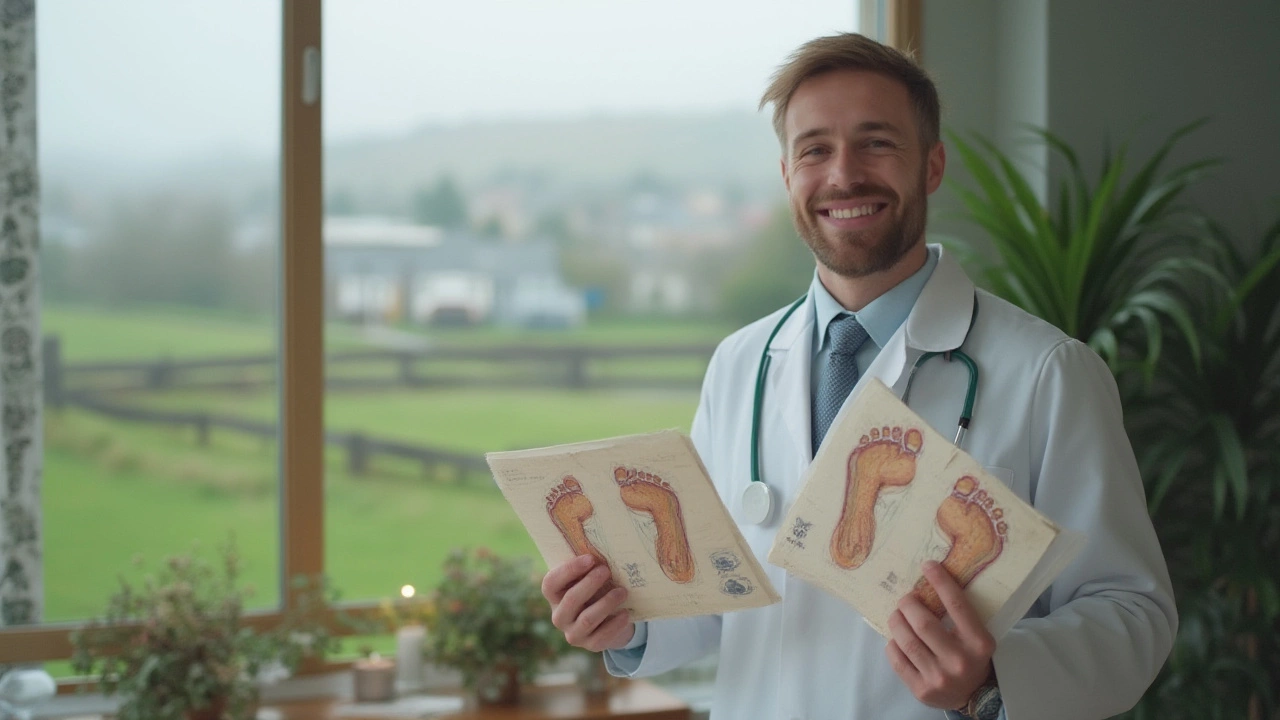Take a stroll along an Irish beach and it's tempting to kick off your shoes and squish your toes in the cool sand. We’ve all done it – darting across St Stephen’s Green in Dublin after a shower, or padding bare onto the lush Wicklow grass. But here comes the question that trips up more than a few: do podiatrists here in Ireland really recommend going barefoot? There’s a lot of talk about the benefits, especially with all the wellness trends and claims on social media, but does it actually fit our unique Irish ground, weather, or health needs?
What Do Podiatrists in Ireland Think About Barefoot Walking?
The first thing you notice chatting with Irish podiatrists is the lack of a one-size-fits-all answer. The Irish Podiatry Association, for one, doesn’t hand out blanket endorsements for barefoot walking. Why? Well, the climate and landscape here simply aren’t the same as sun-baked Australia or California, where barefoot movements got popular. Our damp, unpredictable weather means there’s more risk of cold and nasty surprises hiding in that fresh grass. Even a quick step outside can mean landing on sharp stones, broken glass, thorns, or – let’s be honest – a bit of dog mess left behind on a path in Bray or Galway.
Irish podiatrists generally agree on a few things. For kids growing up, especially in the early years, being barefoot indoors at home actually helps build natural foot muscles and balance. Shoes aren’t needed for first steps across the living room in Cork, and letting children go shoeless at home can encourage healthy development. But outdoors, things get trickier. The risk of stepping on something sharp or catching a cold is just higher in Ireland, and it’s not like we get many of those balmy summer evenings either.
There’s also the health side. Fungal infections like athlete’s foot are more common in warm, damp shoes, but bare feet in cold, wet weather can mean chilblains or even worse for people with diabetes or circulation issues. Dr. Orla Murphy, who works in a Waterford podiatry clinic, points out that patients with reduced sensation in their feet (think: diabetes) should never go barefoot outdoors, and even indoors can be risky if you can’t feel where you’re stepping.
Of course, podiatrists also see the flip side. Traditional Irish woollen socks – think Aran style, pure wool, warm as can be – do benefit feet on our colder nights. But wearing poorly fitting or heavy shoes all day, the kind that don’t fit right, does more damage than a gentle stroll barefoot around a safe, clean house. If you’re dealing with bunions or chronic pain, Irish podiatrists might even recommend a mix: supportive slippers indoors, and well-fitted shoes for the town or country lanes.
Evidence from Trinity College Dublin’s 2022 survey on foot health shows most Irish adults spend about 16 hours a day in shoes, with only 20% going barefoot regularly at home. Interestingly, those who mixed barefoot time with proper footwear (indoors and outdoors) reported the fewest complaints about sore feet or poor balance by age 50. So yes, Irish climate plays a big part, but your daily habits matter too.

The Pros and Cons: Going Barefoot in Ireland’s Climate
It sounds lovely: walking barefoot on the mossy lawns of Powerscourt Gardens, or dancing without shoes at a festival in West Cork. But the reality? Irish ground is usually cold, often wet, and sometimes gritty. That doesn’t mean you should avoid barefoot time altogether. Instead, it’s about choosing when and where – smartly.
Pros first. Walking barefoot on soft, even ground (like a safe patch of grass in Phoenix Park or your own garden) can strengthen the tiny foot muscles that tend to get lazy inside runners, boots, or heels. It helps balance, builds flexibility in toes, and even improves posture. Young kids especially benefit – just keep them away from city pavements! There’s also a popular idea (called ‘earthing’) that putting your bare soles on natural Irish soil can boost mood or immunity, although science hasn’t fully proven all those claims just yet.
On the flip side, Irish surfaces aren’t always friendly. Slippery moss, hidden gravel, and unpredictable weather mean bare feet outdoors risk cuts, scrapes, or cold-related problems. Irish podiatrists see plenty of minor injuries from kids playing football barefoot, or adults forgetting that their garden isn’t as clean as they hoped after the latest rainfall. In rural parts, sharp thorns, nettles, or even cattle droppings make barefoot a definite no-go.
For city dwellers tempted to run barefoot around the block, forget it. Dublin footpaths, especially after a Saturday night, are full of hazards: broken bottles, rusty cans, bits of chewing gum, and enough bacteria to make anyone pause. Even playgrounds might hide fragments of glass. Indoor sports halls or pools are better, but beware of fungi that thrive on wet floors. Always pack flip-flops or shower shoes for use in public spaces like leisure centres.
What about at home? That’s the safest bet. Most Irish podiatrists, including those at Mater Private and Beacon Hospital, say light barefoot time is good for circulation if the floor is clean and it’s not freezing cold. On chilly tile, try a pair of socks with grippy soles or supportive house shoes instead of hard slippers. If you have pets, sweep often to keep paws and feet injury-free.
So, if you’re tempted to ditch shoes now and then out west in Connemara or up north in Donegal, just be careful. Do a quick look round for sharp objects or cold puddles, and avoid going barefoot for more than a few minutes if your feet start to feel numb. And for folks with health concerns like diabetes, arthritis, or poor balance, always ask your GP or podiatrist before walking barefoot outside.

Safe Barefoot Habits and Alternatives for Irish Feet
So you want the barefoot benefits but not the Irish downsides? Good news: you can keep feet healthy without risking a soggy trot through Clontarf or a bruised toe on Skellig Michael’s rocks. The trick is to match barefoot time to the right place and season. Indoors, most clean carpets or timber floors are fine. If you have underfloor heating (lucky you!), enjoy those barefoot moments all winter long.
For outdoors, reserve barefoot walks for summer heatwaves (we do get one or two!) and even then, only on familiar ground you’ve checked for hazards. Irish beaches like Inchydoney or Portmarnock are perfect – the sand cushions feet and you can rinse off in the sea. In parks, try a quick barefoot walk if the grass is clean and dry, but pull on shoes if it feels cold or mucky.
A lot of people in Ireland are choosing ‘barefoot’ shoes now, especially for hill walking or jogging. Shoes like Vivobarefoot or Xero (available from Irish sports shops or online) offer the feel of being barefoot with a layer of protection from thorns or stones. They let your toes spread and your muscles work naturally but keep out the cold and dirt. If you have trouble with foot pain, Irish podiatrists sometimes recommend these for indoor use on flat surfaces, not rough Galway streets.
Care for your feet like you care for your hands – daily washing, checking for cracks, and drying thoroughly (especially between toes – athlete’s foot loves moisture). Trim nails straight, keep skin soft with a bit of Irish-made hand cream (like Human+Kind), and pop on fresh socks. If you do get a cut or blister, don’t ignore it – clean it, cover it, and if it doesn’t heal, book a podiatrist appointment. Many offer same-day slots in major towns now, and can give tailored advice for your foot shape and lifestyle.
If you’re keen to let your kids go barefoot more, make it part of their home routine. Let toddlers play without shoes after a bath, and encourage pre-teens to try gentle balance exercises on soft carpet. For sports, stick to trainers or boots – most local clubs in Ireland require proper shoes, and for good reason! One quick slip on a muddy GAA pitch is enough to make anyone rethink barefoot rugby.
Adults, if you work in a job that demands safety footwear (construction, healthcare, kitchens), don’t take shoes off at work. But after hours, stretch out those toes with gentle foot exercises, or take a barefoot walk across a fluffy rug. At festivals like Electric Picnic, keep flip-flops handy for muddy bits and dance floors. A little barefoot time can refresh tired feet, as long as it’s done in the right place.
| Situation | Safe to Go Barefoot? | Recommended Footwear |
|---|---|---|
| Home (clean, warm indoors) | Yes, for short periods | Supportive slippers, socks |
| Irish beach (sand) | Yes, check for sharp objects first | Barefoot or flip-flops |
| Irish countryside/fields | No, risk of thorns, animal droppings | Walking boots |
| City streets | No, high risk of injury | Trainers or sturdy shoes |
| Public pool/leisure centre | No, risk of fungal infection | Shower shoes/flip-flops |
The bottom line? Enjoy barefoot walking where it fits Ireland’s unpredictable climate and your lifestyle. Listen to your feet, your podiatrist, and your mother’s warnings about catching cold. Let kids play barefoot at home, pick the right shoes for outdoors, and don’t buy the ‘barefoot is best’ hype blindly. Irish podiatrists aren’t anti-barefoot, but they’d rather see you with toes intact at the end of the year.
